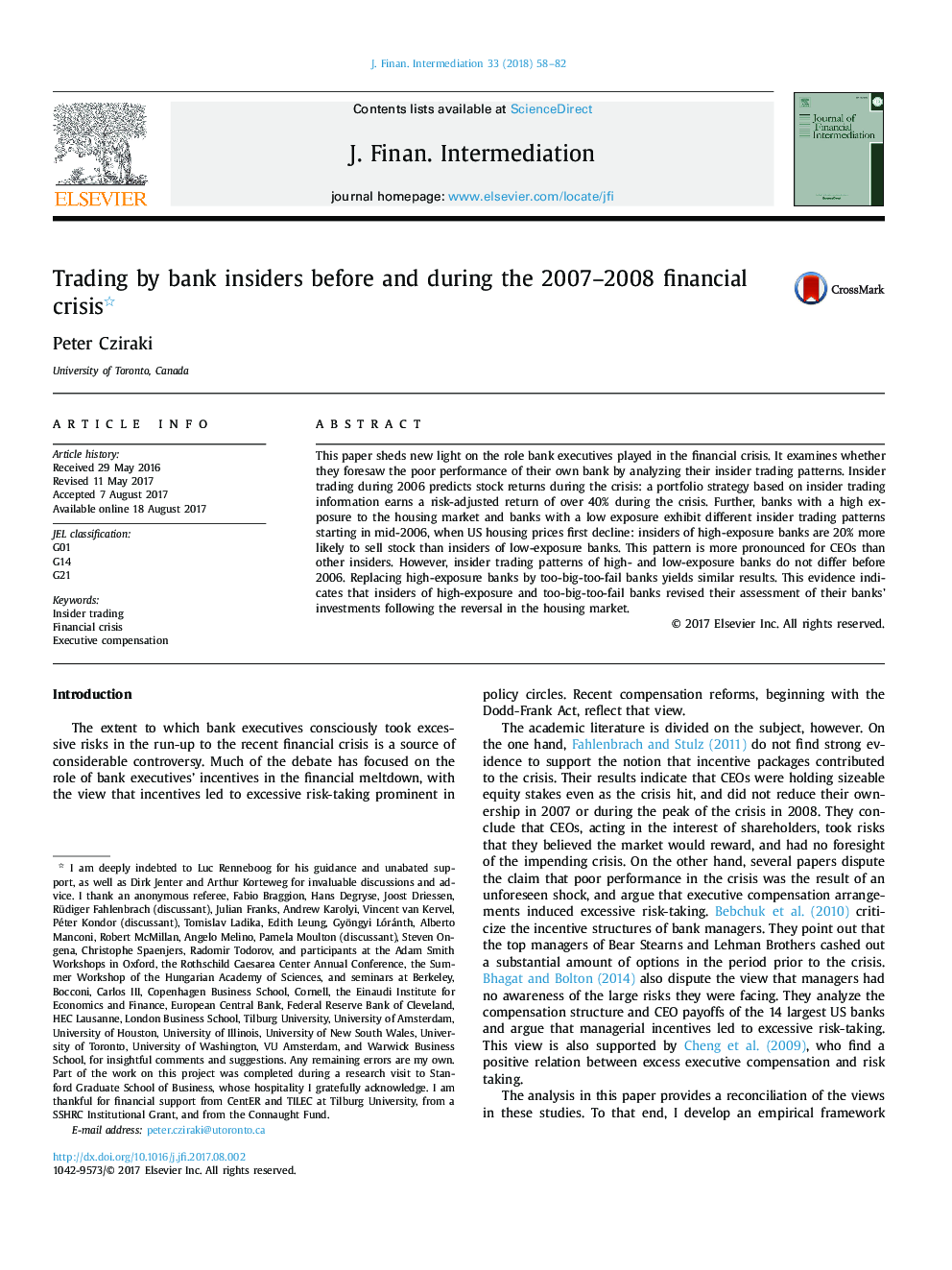| Article ID | Journal | Published Year | Pages | File Type |
|---|---|---|---|---|
| 7362276 | Journal of Financial Intermediation | 2018 | 25 Pages |
Abstract
This paper sheds new light on the role bank executives played in the financial crisis. It examines whether they foresaw the poor performance of their own bank by analyzing their insider trading patterns. Insider trading during 2006 predicts stock returns during the crisis: a portfolio strategy based on insider trading information earns a risk-adjusted return of over 40% during the crisis. Further, banks with a high exposure to the housing market and banks with a low exposure exhibit different insider trading patterns starting in mid-2006, when US housing prices first decline: insiders of high-exposure banks are 20% more likely to sell stock than insiders of low-exposure banks. This pattern is more pronounced for CEOs than other insiders. However, insider trading patterns of high- and low-exposure banks do not differ before 2006. Replacing high-exposure banks by too-big-too-fail banks yields similar results. This evidence indicates that insiders of high-exposure and too-big-too-fail banks revised their assessment of their banks' investments following the reversal in the housing market.
Related Topics
Social Sciences and Humanities
Business, Management and Accounting
Strategy and Management
Authors
Peter Cziraki,
